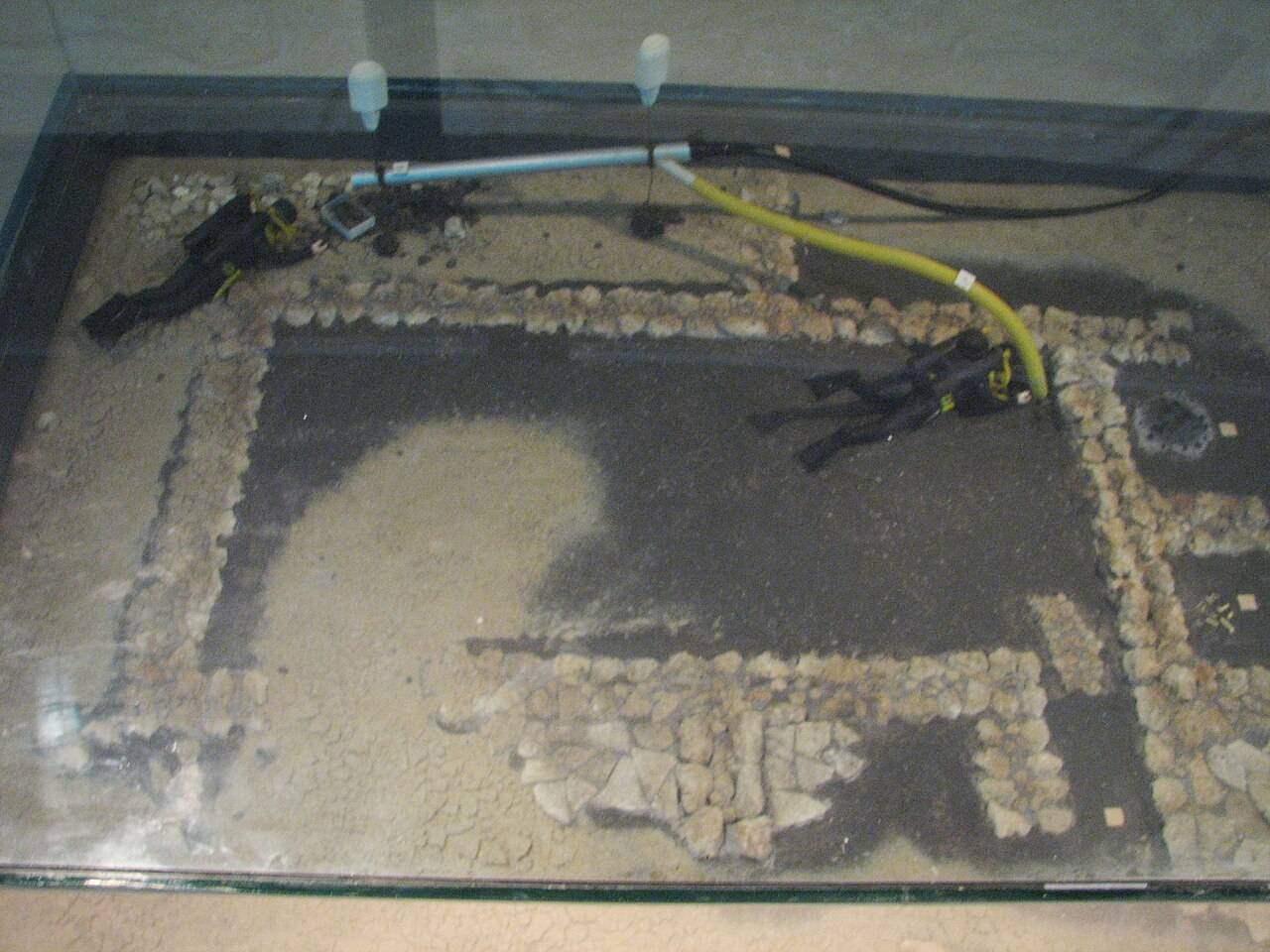Atlit Yam is a prehistoric submerged village off the coast of Atlit, Israel. It dates back to the final prehistoric period, around 6900 to 6300 BC. This site provides a rare glimpse into the lives of its Neolithic inhabitants. Remarkably preserved due to its submersion, Atlit Yam offers insights into the transition from hunter-gatherer societies to farming communities. It includes structures such as stone houses, wells, and a mysterious stone circle. The site also reveals evidence of the earliest known cases of tuberculosis.
Get your dose of History via Email
Historical Background of Atlit Yam Israel
Atlit Yam lay hidden beneath the Mediterranean Sea until its discovery in 1984 by marine archaeologist Ehud Galili. The site spans over 40,000 square meters. It was a settlement during the Neolithic period. The people who built Atlit Yam were among the first to transition from nomadic to sedentary lifestyles. They practiced farming and animal husbandry. Over time, rising sea levels submerged the village, preserving it in a watery grave.
The discovery of Atlit Yam was groundbreaking. It provided a snapshot of life during a pivotal time in human history. The site’s preservation is so exceptional that it includes human remains. These offer invaluable information on the health, diet, and even the DNA of its ancient inhabitants. The village was not inhabited later, as it lay underwater, undisturbed until its discovery.
Atlit Yam is significant for its well-preserved architecture and artifacts. These include stone houses, a well, and graves. The well is particularly notable as it is one of the earliest known examples of a freshwater well. This suggests advanced understanding of water sources among the villagers. The site also includes a mysterious stone semicircle, which some believe had astronomical significance.
While Atlit Yam was not the scene of any known historical events, its existence and preservation are historically important. They provide a window into the Neolithic Revolution. This was when humans began to settle and form communities. The site’s discovery has spurred further research into submerged prehistoric settlements around the world.
The people who built Atlit Yam were skilled farmers, herders, and builders. They left behind a legacy that, thousands of years later, continues to intrigue and educate. The site’s discovery by Ehud Galili and his team has opened a new chapter in the study of ancient civilizations and their relationship with the environment.

About Atlit Yam Israel
Atlit Yam is a testament to Neolithic engineering and community life. The site includes well-built structures made from stones and mud bricks. The materials were locally sourced, demonstrating the inhabitants’ use of available resources. The architecture includes rectangular houses with rooms, hearths, and storage areas.
The construction methods at Atlit Yam were advanced for their time. The builders used stones to create foundations and walls. They also constructed a well, which is an impressive feat of prehistoric engineering. The well indicates an understanding of groundwater extraction, vital for the village’s survival.
One of the most striking features of Atlit Yam is the stone circle. It consists of seven large stones standing upright in a semicircle. Some researchers suggest it may have served an astronomical purpose. Others believe it could have been a ritual site. The exact function remains a topic of debate among archaeologists.
In addition to the stone structures, Atlit Yam also yielded a variety of artifacts. These include flint tools, animal bones, and human remains. The artifacts provide a glimpse into the daily lives of the villagers. They show their diet, which included domesticated animals and wild species from the sea and land.
The preservation of organic materials at Atlit Yam is remarkable. It includes wooden artifacts and plant remains. These materials rarely survive for such long periods, especially underwater. Their preservation has allowed for detailed analysis, contributing to our understanding of Neolithic life.
Theories and Interpretations
Atlit Yam has sparked various theories about its use and the lifestyle of its inhabitants. The well-preserved nature of the site allows for detailed interpretations. Researchers have used these to reconstruct the social and economic aspects of the village.
One theory suggests that the stone circle had astronomical significance. It may have been used to mark solstices or equinoxes. This would indicate a sophisticated understanding of celestial events by the villagers. However, this theory is not universally accepted.
The presence of tuberculosis in some of the human remains has led to theories about the health and living conditions in Atlit Yam. It provides evidence of the earliest known cases of the disease. This has implications for the study of ancient diseases and their spread among early farming communities.
Interpretations of the site must match historical records and archaeological evidence. Radiocarbon dating has been carried out on organic materials from Atlit Yam. This has confirmed the age of the settlement and provided a timeline for its occupation.
The mysteries of Atlit Yam continue to be explored. Each discovery leads to new questions about the Neolithic era. The site remains an active area of research, with each finding adding to the story of human civilization.
At a glance
Country: Israel
Civilization: Neolithic inhabitants
Age: Approximately 9,000 years old (circa 6900 to 6300 BC)
